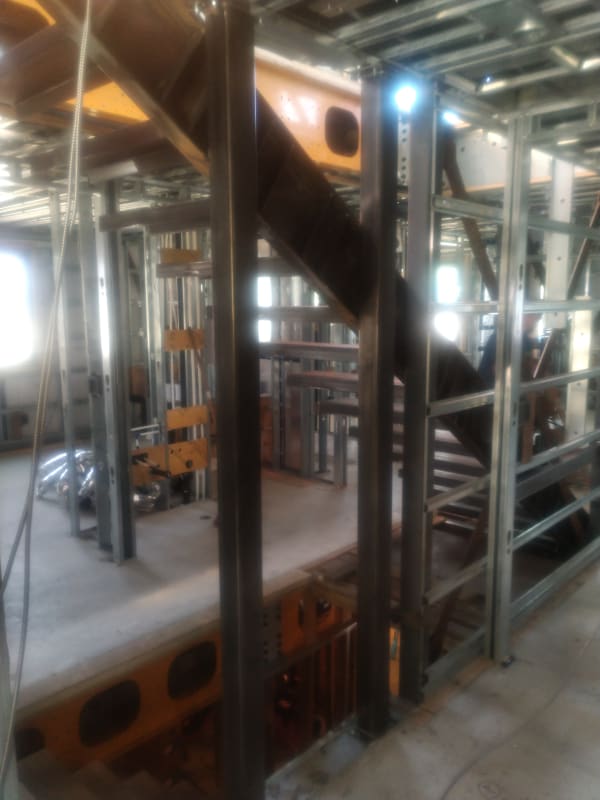Joel Yzerman
Structural
Hi, I recently installed these , design was submitted to my engineer. We are fighting small vibrations on the treads.
I'm wondering if I can use a vibration app on my phone to see if it's unacceptable.
I realized that I need more posts to weld my stringer to in order to stop vibrations, issue is I can't fit anymore in the wall , there is an seismic x brace in the way.
What can I add to make this work ?
Stringer is c12x25/ treads are c10x15.3
I'm new here. Can I add Multiple pictures?
I'm wondering if I can use a vibration app on my phone to see if it's unacceptable.
I realized that I need more posts to weld my stringer to in order to stop vibrations, issue is I can't fit anymore in the wall , there is an seismic x brace in the way.
What can I add to make this work ?
Stringer is c12x25/ treads are c10x15.3
I'm new here. Can I add Multiple pictures?


![[bigglasses] [bigglasses] [bigglasses]](/data/assets/smilies/bigglasses.gif) )
)